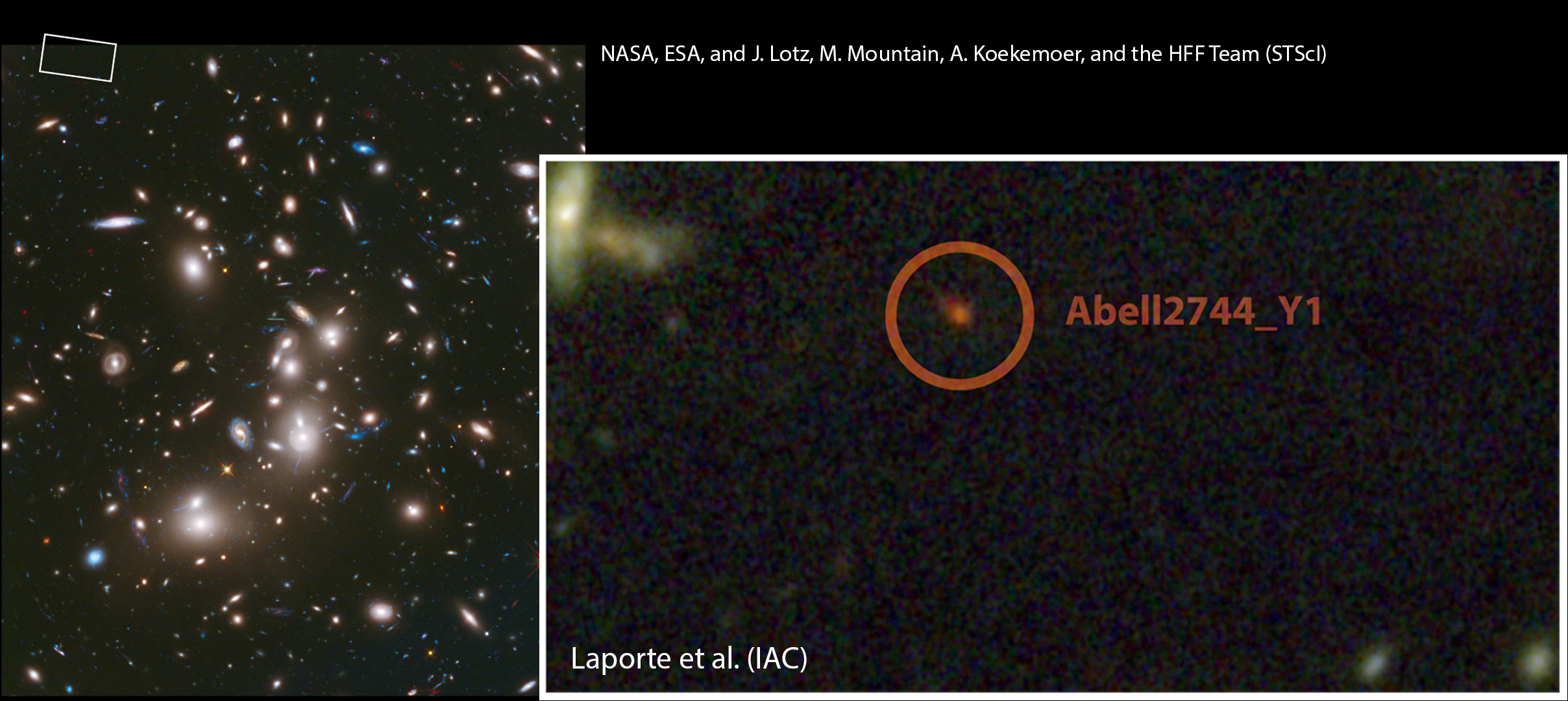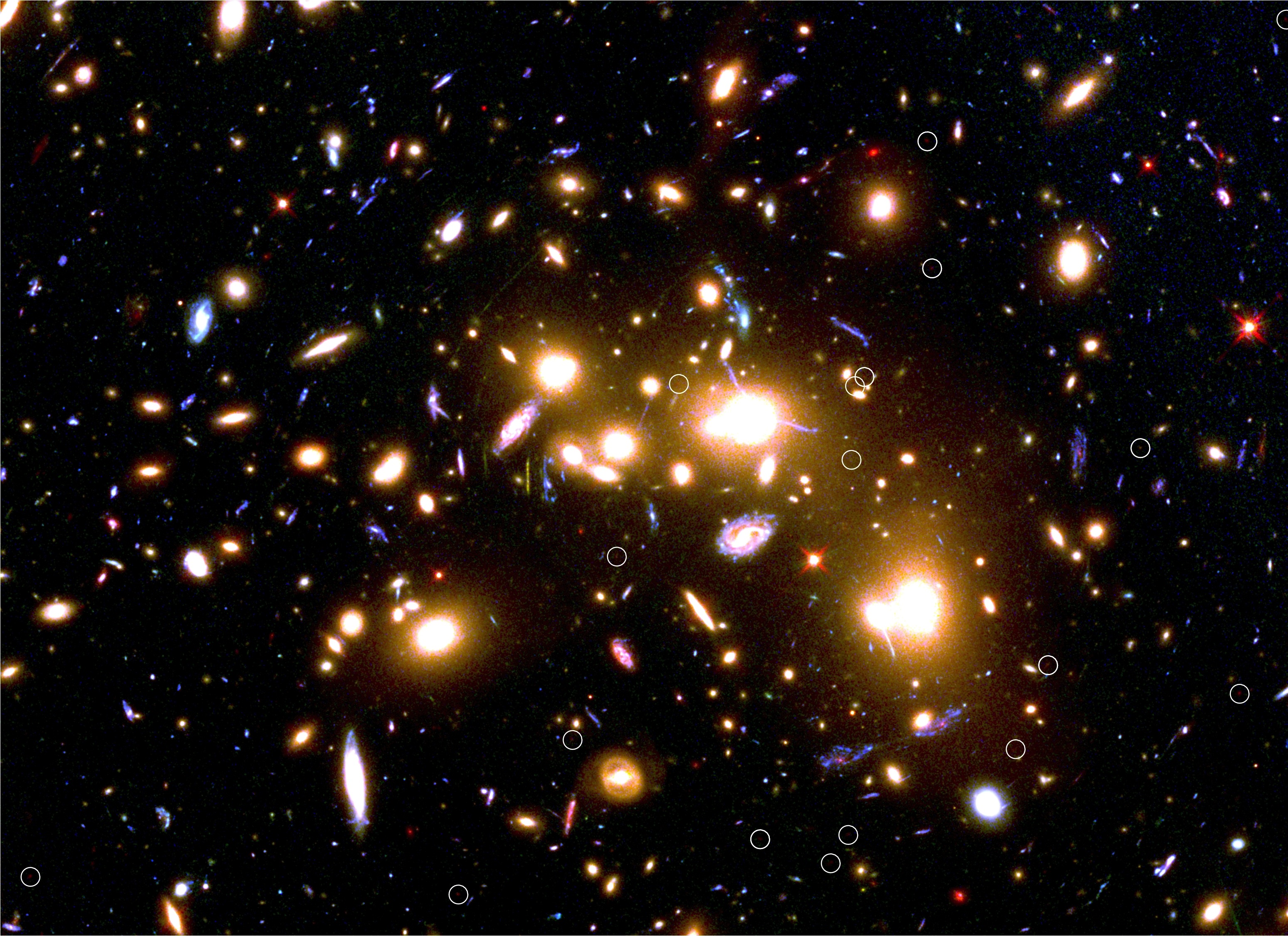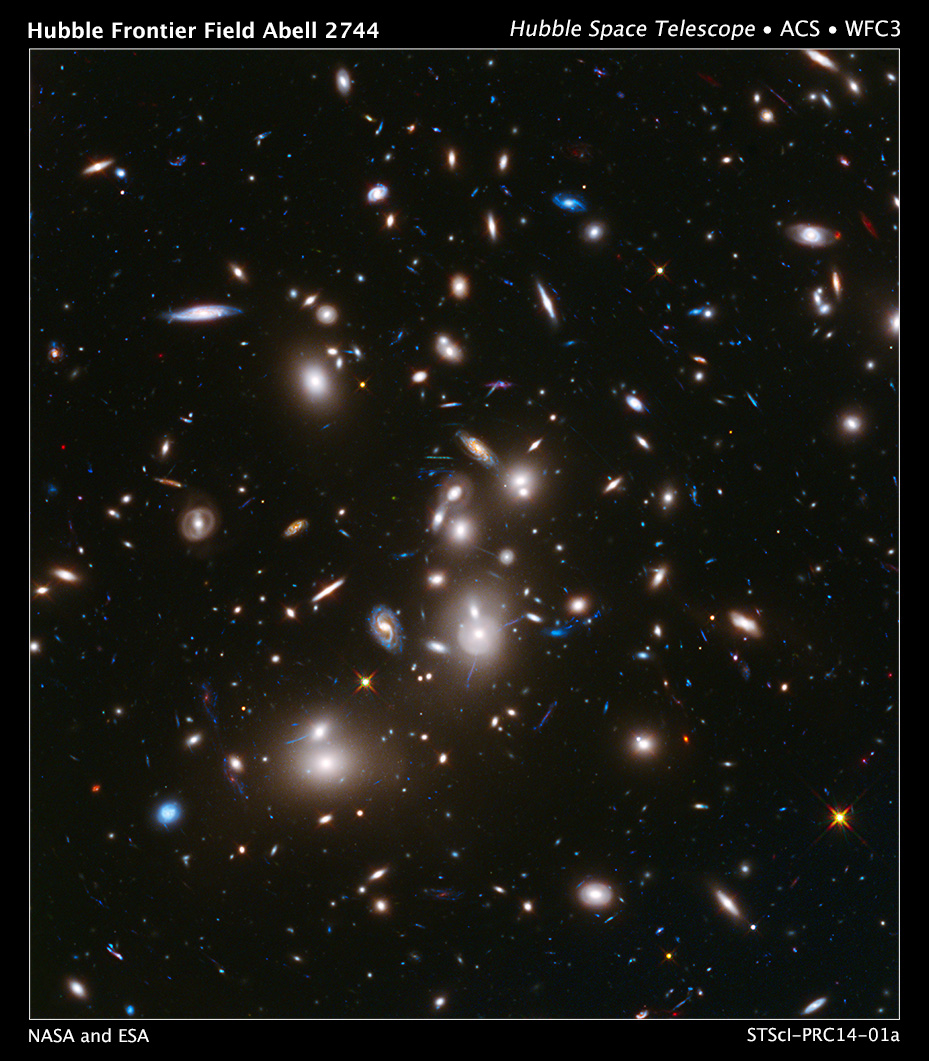
Far away secrets unveiled -
Hubble and Spitzer space telescopes “spy” one of the
youngest galaxies in the Universe
Even the most distant galaxies cannot escape astronomers’ reach. The images obtained thanks to the Hubble and
Spitzer space telescopes have contributed to a better understanding of the process of galaxy genesis. A team made
of members from EPFL and the University of Geneva, associated with French, American and Spanish researchers,
reports its initial findings.
Figure 1:
Image of the distant galaxy, named Y1, disovered behind the galaxy cluster Abell 2744.
The photometric redshift of the galaxy is z~8.0, placing it at approximately 13 billion lightyears.
The galaxy is thus seen as it was 650 million years after the Big Bang, providing a unique view
on galaxy formation in the early Universe, during the so-called phase of cosmic reionization.
Source: N. Laporte (IAC)

Figure 2:
Multi-band (false-color) image of the galaxy cluster Abell 2744 taken with the Hubble Space Telescope, showing many "arcs"
(strongly lensed background galaxies showing up in blue) as well as distant galaxies identified by
Atek et al. (2014).
Source: H. Atek, J.-P. Kneib (EPFL)

Figure 3:
Multi-band (false-color) image of the galaxy cluster Abell 2744 taken with the Hubble Space Telescope.
Taken from the 1st press release of the "Hubble Frontier Fields" projects in january 2014.
Source: NASA/ESA - link to images at different resolutions
